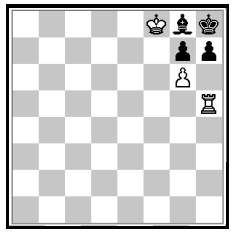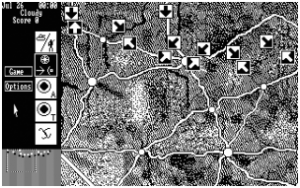 I will be MCing the “Artificial Intelligence in Modern Military Games” panel at GameTech 2012 next week (March 29, 2012) in Orlando. I am extremely honored to be joined on this panel by:
I will be MCing the “Artificial Intelligence in Modern Military Games” panel at GameTech 2012 next week (March 29, 2012) in Orlando. I am extremely honored to be joined on this panel by:
Dr. Scott Neal Reilly is currently Principal Scientist and Vice President of the Decision Management Systems Division at Charles River Analytics, an artificial intelligence R&D company in Cambridge, MA. Dr. Neal Reilly’s research focuses on modeling emotional and social behavior in artificial agents and he was Principal Investigator for the US Army’s Culturally Aware Agents for Training Environments (CAATE) program, which focused on developing easy-to-use tools for creating interactive, intelligent, social agents. Dr. Neal Reilly has a Ph.D. in Computer Science from Carnegie Mellon University, where he developed the Em system to model emotions in broadly capable intelligent agents. Before joining Charles River, Dr. Neal Reilly was Vice President of Production and Lead Character Builder at Zoesis Studios, which developed advanced artificial intelligence techniques for creating animated, artificially intelligent agents.
James Korris is CEO and President of Creative Technologies Incorporated (CTI). CTI, named as one of Military Training Technology’s 2011 Top 100 Simulation and Training companies, is at the forefront of immersive, cognitive simulation development for government and industry. Recent work includes one of the first DoD augmented virtuality (AV) implementations, the Call For Fire Trainer – AV, along with novel mobile applications for the Fort Sill Fires Center of Excellence. Korris is currently leading a CTI effort supporting the SAIC Sirius team with a desktop application to mitigate analyst cognitive bias for IARPA.
From its establishment in 1999 until October 2006, Korris served as Creative Director of the U.S. Army-funded Institute for Creative Technologies at the University of Southern California. In this pioneering “serious gaming” environment, Korris led the development of Full Spectrum Warrior, the first military application developed for the Xbox, along with desktop applications Full Spectrum Command and Full Spectrum Leader. Korris’ team captured the DoD 2006 Modeling & Simulation award for training with Every Soldier A Sensor Simulation. In 2007, USJFCOM recognized another Korris-led effort, the Joint Fires & Effects Trainer System as the highest-rated Close Air Support simulation trainer in the world. In 2008, Korris was appointed to the Naval Research Advisory Committee, advising the Secretary of the Navy on its research portfolio. Korris came to the defense industry following work in Hollywood studio production, producing and writing. He is a member of the writers’ branch of the Academy of Television Arts and Sciences, the Writers Guild of America, the Writers Guild of Canada and the Society of Motion Picture and Television Engineers. His work was recognized in the 2006 Smithsonian Cooper-Hewitt National Design Triennial, Saul Wurman’s eg2006 conference and as a Visionary in Bruce Mau’s Massive Change exhibition. Korris earned a BA from Yale University and an MBA with distinction at the Harvard Business School.”
Dr. Michael van Lent received a PhD at the University of Michigan in 2000. His expertise is in applying cognitive science approaches to military problems. Dr. van Lent is a recognized expert in the development of advanced simulation systems for military training. He has participated in the design and development of many immersive training applications including Full Spectrum Warrior, Full Spectrum Command, the Joint Fires and Effects Trainer System (JFETS), ELECT BiLAT, UrbanSim, Helping our Heroes and the Strategic Social Interaction Modules program.
Robert Franceschini is a vice president and Technical Fellow at Science Applications International Corporation (SAIC). He directs the Modeling and Simulation Center of Expertise, an organization that spans SAIC’s modeling and simulation capabilities. Prior to SAIC, Dr. Franceschini held academic and research positions at the University of Central Florida (UCF) and its Institute for Simulation and Training. He plays an active role in science, technology, engineering, and mathematics programs in central Florida. He received both a BS and a Ph.D. in computer science at UCF.
I’m looking forward to meeting you in Orlando!

